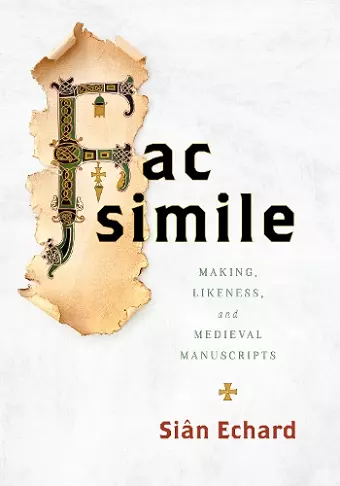Facsimile
Making, Likeness, and Medieval Manuscripts
Format:Hardback
Publisher:University of Pennsylvania Press
Published:14th Oct '25
Currently unavailable, our supplier has not provided us a restock date

An unprecedented cultural history of reproductions of medieval manuscripts
Facsimiles are, or claim to be, exact copies of objects, and medieval manuscripts have long been a focus for this kind of reproduction. Today, digitization delivers complete, high-resolution, full-color digital copies of thousands of medieval manuscripts to anyone with an internet connection. But for centuries, scholars in fields like art history, or paleography, or textual editing had to travel to see the manuscripts their work depended on. When they couldn't, they relied on copies—drawings, engravings, lithographs, and eventually monochrome photographs, usually of parts of a manuscript rather than the whole thing.
Facsimile explores the prehistory of our digital present, focusing on the eighteenth and nineteenth centuries—a period that witnessed rapid technological change; a renewal of interest in the Middle Ages in the public at large; the consolidation and emergence of scholarly disciplines; and the increase in institutions that cared for medieval manuscripts. Siân Echard shows how facsimiles of medieval manuscripts were central to all these developments. Focusing on Britain, Echard traces how predigital technologies of reproduction were viewed by their practitioners and consumers, and how they helped to form the ways people related to the medieval past. Facsimile users were scholarly and popular, with interests in text, or image, or books, or all these things at once. Four chapters—Letter, Figure, Color, Catastrophe—show how the human hand, the human eye, and the human imagination intertwined with technology, creating modern-medieval hybrids that sit at the intersection of past and present.
From the rise of paleography and diplomatics as disciplines to the emergence of calligraphy as a craft and hobby, from the use of facsimiles in shaping narratives of national identity to the substitution of facsimiles for destroyed or damaged manuscripts in the development of preservation practices, Facsimile offers an unprecedented cultural history of reproductions of medieval manuscripts.
"One of the most original and substantive contributions to medieval studies I have read. Siân Echard's brilliant, detailed, and sensitive explorations of the facsimile's significance through time will change how we perceive the connections between the 'real' and the 'copy,' the present and the past." (Elaine Treharne, author of Perceptions of Medieval Manuscripts: The Phenomenal Book) "Gorgeously illustrated and conceptually groundbreaking, Facsimile invites us to reconsider books as more than static objects. They are processes as well as products, originals and copies, that shape and reshape scholarly and public views of the medieval past." (Alexandra Gillespie, author of Print Culture and the Medieval Author: Chaucer, Lydgate, and Their Books, 1473–1557) "Echard offers an important contribution to the histories of antiquarianism and the modern formation of a national British identity by means of facsimile reproduction of medieval manuscripts. Facsimile gathers a rich trove of primary sources from the eighteenth and nineteenth centuries and will constitute a vital resource for all future work on the subject." (Sonja Drimmer, author of The Art of Allusion: Illuminators and the Making of English Literature, 1403–1476) "Situated at the intersection of art history, literary reception studies, and the history of technology, Facsimile interweaves scholarly threads that are more often treated separately or as case studies. This book offers a new perspective on medieval manuscripts, both in its period of focus and in its elegant synthesis of multiple disciplinary and methodological frames." (Megan L. Cook, author of The Poet and the Antiquaries: Chaucerian Scholarship and the Rise of Literary History, 1532–1635)
ISBN: 9781512827057
Dimensions: unknown
Weight: unknown
344 pages